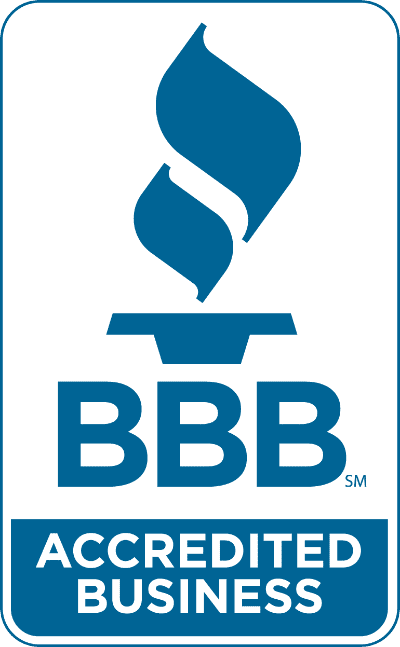One of the most delicate areas of the house is the bathroom. Every homeowner will make great efforts to make sure their bathroom is hygienic and foul odor-free. Even with the best care, a bathroom might develop issues beyond the homeowner’s control, such as a sewage odor emanating from the bathroom drains.
Apart from the unpleasant odor, sewage gases pose a serious health risk to your family, and you should treat them right away. Fortunately, some of the solutions are straightforward to implement. However, if you are not confident in doing DIYs, we suggest you contact a professional. Eco Pro Plumbing provides the best plumbing services. They also offer the best bathtub replacement in Cambridge.
Лучшие стратегии игры в Riobet казино для российских игроков
Вы являетесь поклонником азартных игр и ищете лучшие стратегии для успешной игры в онлайн-казино? Тогда вы попали по адресу! В этой статье мы рассмотрим самые эффективные стратегии игры в Riobet казино, которые помогут вам увеличить ваши шансы на победу. Независимо от того, являетесь ли вы новичком или опытным игроком, эти стратегии помогут вам преуспеть и достичь желаемых результатов.
Какие стратегии помогут вам увеличить шансы на выигрыш? Мы рассмотрим такие важные аспекты, как управление банкроллом, выбор игры, использование бонусов, анализ статистики и многое другое. Вы узнаете, как определить оптимальную ставку, как выбрать выгодную игру с высокими шансами на успех, а также как использовать бонусы и акции для увеличения своих выигрышей. Готовы ли вы узнать секреты успешной игры в Riobet казино? Тогда держитесь крепче, потому что мы начинаем!
Выбор надежных стратегий для успешной игры в казино Riobet
Лучшие стратегии игры в Riobet казино для российских игроков могут помочь увеличить шансы на выигрыш и получить больше удовольствия от игры. Одной из таких стратегий является управление банкроллом. Важно распределить свои деньги таким образом, чтобы играть на протяжении длительного времени. Также рекомендуется устанавливать лимиты на ставки, чтобы не рисковать больше, чем вы готовы потерять. Последовательное следование этим принципам поможет сохранить баланс и повысить шансы на успех.
Еще одной эффективной стратегией является выбор игр с высокими выплатами. Riobet казино предлагает широкий выбор игровых автоматов и настольных игр с разными коэффициентами выплат. Игрокам рекомендуется изучить правила и характеристики каждой игры, чтобы выбрать те, которые имеют наибольший процент выплат. Таким образом, можно увеличить вероятность получения выигрыша и улучшить свои результаты в казино Riobet.
Также стоит упомянуть о бонусных предложениях и акциях, которые предлагает Riobet казино. Использование бонусов и промо-кодов может дать дополнительные возможности для игры и увеличить шансы на выигрыш. Пользователи могут ознакомиться с актуальными предложениями на официальном сайте казино по ссылке https://riobet247.com/. Таким образом, игроки могут использовать эти стратегии в Riobet казино, чтобы повысить свои шансы на успех и насладиться игрой в полной мере.
Оптимальное управление банкроллом: ключевая стратегия игры в Riobet казино
В Riobet казино есть несколько лучших стратегий, которые помогут российским игрокам повысить свои шансы на победу. Во-первых, следует учитывать величину ставки. Рекомендуется начинать с небольших ставок и постепенно увеличивать их при увеличении банкролла. Это позволит снизить риск быстрой потери денег и увеличить время игры.
Во-вторых, важно выбирать игры с наиболее выгодными шансами. Некоторые игры в Riobet казино имеют более высокий процент выплаты, что означает, что игроки имеют больше шансов на выигрыш. Например, игры с низким краем дома, такие как блэкджек или видеопокер, могут быть более выгодными для игроков.
Третья стратегия включает управление банкроллом. Важно установить лимиты для себя и придерживаться их. Никогда не играйте на сумму, которую вы не можете себе позволить потерять. Кроме того, имеет смысл установить лимиты на выигрыш. Если вы достигли определенной суммы выигрыша, остановитесь и сохраните свои деньги. Это поможет вам избежать потери всех выигранных денег.
Использование математических моделей для повышения шансов на выигрыш в Riobet казино
Риобет казино предлагает широкий выбор игр для российских игроков, и чтобы увеличить свои шансы на победу, важно использовать эффективные стратегии игры. Вот несколько из лучших стратегий, которые можно применить в Riobet казино.
- Управляйте своим банкроллом: Одна из важнейших стратегий игры в казино – это эффективное управление своим банкроллом. Разделите свои деньги на несколько сессий и установите лимиты на ставки. Так вы сможете контролировать свои потери и избежать непредвиденных финансовых проблем.
- Изучайте правила игры: Прежде чем начать играть в Riobet казино, важно тщательно изучить правила каждой игры. Понимание правил поможет вам принимать более обоснованные решения и увеличить свои шансы на выигрыш.
- Используйте бонусы и акции: Riobet казино предлагает различные бонусы и акции, которые могут помочь вам увеличить ваш банкролл. Воспользуйтесь этими предложениями, чтобы получить дополнительные шансы на победу и увеличить свои выигрыши.
Используя эти стратегии, российские игроки могут повысить свои шансы на победу в Riobet казино. Однако, помните, что азартные игры – это всегда риск, и никакая стратегия не может гарантировать выигрыш. Важно играть ответственно и наслаждаться процессом, не забывая о возможных потерях.
Применение стратегии ставок в Riobet казино: как увеличить свою прибыль
Игра в казино Riobet предлагает множество возможностей для российских игроков, и чтобы увеличить свои шансы на успех, важно использовать эффективные стратегии. Одной из лучших стратегий является управление банкроллом. Это означает, что игрок должен устанавливать лимиты на свои ставки и придерживаться их. Также рекомендуется использовать стратегию мартингейла, которая предполагает удваивание ставки после каждого проигрыша до тех пор, пока не будет достигнута победа.
Еще одной эффективной стратегией игры в Riobet казино является выбор игр с наибольшими шансами на выигрыш. Некоторые из таких игр включают блэкджек, рулетку и покер. При выборе игры важно учитывать правила и вероятности выигрыша. Кроме того, рекомендуется использовать стратегию ставок с постепенным увеличением, чтобы увеличить свой выигрыш со временем.
Наконец, одной из самых важных стратегий является умение контролировать свои эмоции. Во время игры в казино Riobet важно оставаться спокойным и рациональным. Необходимо уметь прекратить игру вовремя, если удача не на вашей стороне, и не пытаться вернуть потерянные деньги сразу же. Только с помощью хладнокровия и разумных решений можно достичь успеха в игре в Riobet казино.
Психологические аспекты игры в Riobet казино: стратегии контроля эмоций и принятия решений
Лучшие стратегии игры в Riobet казино для российских игроков зависят от желаемого результата и предпочтений каждого игрока. Однако, существуют несколько основных стратегий, которые могут помочь увеличить шансы на выигрыш. Во-первых, игрокам рекомендуется ознакомиться с правилами и условиями каждой игры, чтобы понять ее механику и возможности. Во-вторых, использование стратегии управления банкроллом может быть полезным. Это включает в себя установление предельных лимитов ставок и умение остановиться вовремя, чтобы не рисковать больше, чем можно позволить себе. Также, игрокам стоит изучить различные системы ставок, такие как Мартингейл или Д’Аламбер, чтобы определить, какая из них лучше подходит для их стиля игры и бюджета.
В Riobet казино также можно использовать стратегии для конкретных игр. Например, в рулетке многие игроки предпочитают использовать стратегию Мартингейл, удваивая ставку после каждого проигрыша. В блэкджеке рекомендуется следовать базовой стратегии, которая оптимизирует шансы на победу в зависимости от карт на руках игрока и дилера. В игровых автоматах также можно использовать стратегию выбора игр с высокими процентами выплат. Важно помнить, что стратегии не гарантируют победу, но могут помочь увеличить вероятность успешного и прибыльного опыта в казино Riobet.
В заключение, лучшие стратегии игры в Riobet казино для российских игроков могут значительно повысить шансы на выигрыш и сделать игровой процесс более увлекательным. Однако, важно помнить, что азартные игры всегда связаны с риском, и не существует гарантированных способов выигрыша. Поэтому, перед тем как начать играть, необходимо установить лимиты и играть ответственно. Наслаждайтесь азартом, и пусть удача всегда будет на вашей стороне!
Here are the most common causes of bathroom sewage smells and quick fixes.
- Dry P-trap
One of the most prevalent causes of sewer-like smells in your bathroom is a dry P-trap. A P-trap is a U-shaped pipe that runs beneath the sink or drains. It’s utilized to keep sewage odors out of the bathroom by trapping water behind the drain. If you don’t use your bathroom sinks regularly, the water in the P-trap may dry out, allowing sewage gases to enter your bathroom easily.
It’s easy to solve this issue. Run some water through the sink for a minute or two to solve the problem. You can also pour baking soda down the drains to avoid clogging.
- Clogs in the shower drain
Pieces of soap, shower gel, dead skin, hair, and other debris can clog your shower drains. If you notice a sewage odor in your bathroom and slight flooding when showering, you may have a blocked shower drain.
This problem has a simple solution that you may implement on your own. You can hire an expert to fix it if you are not a DIY person. This is what you must do if you decide to do it yourself. Add a vinegar solution and hot water to the drain in a continuous stream. Next, add 1 cup of baking soda and let it sit for at least two hours. This procedure should be enough to release the deposits. After that, use a drain brush to remove any solid material that may have become stuck in the drain. You’re done once you’ve screwed the drain cover into place. Screw in the drain cover, and you’re done.
- Damaged toilet
You could have sewer gas leaking into your bathroom because of wear and tear on your toilet. A good example is when the wax barrier at the base of your toilet loosens, allowing sewage gas to flow into your bathroom through microscopic cracks.
Small cracks in your toilet bowl can also create water leaks, causing the water level in your toilet’s P-trap to drop. Low water levels in the P-trap may allow sewage gases to enter your bathroom, resulting in a foul odor. If you’re having trouble with something like this, it’s advisable to hire a professional to help you.
- Broken or poorly installed vent pipes
The vent pipe serves as a breather for your sewer system. When it becomes clogged, sewer gases can back up into the sinks and toilet, causing sewage odors in your bathroom. You may hear a bubbling sound coming from the toilet or drain as sewage gas infiltrates the bathroom.
Objects that find their way into vent pipes could block them due to poor installation or solid objects lodged in them. If the problem persists, check the vent for any blockages and remove them or call a specialist.
- Bacteria buildup
The sewer system is an ideal breeding ground for toxic bacteria that can enter your bathroom, eventually causing foul odors. This is especially true when germs multiply at a high rate during the summer.
Bleach can be a useful tool for preventing bacterial growth. However, swishing bleach around the toilet bowl isn’t going to cut it. Therefore, you can eliminate the risk by adding bleach to the flush tank and flushing the toilet a few times.
Read Also: How to Repair a Sump Pump





